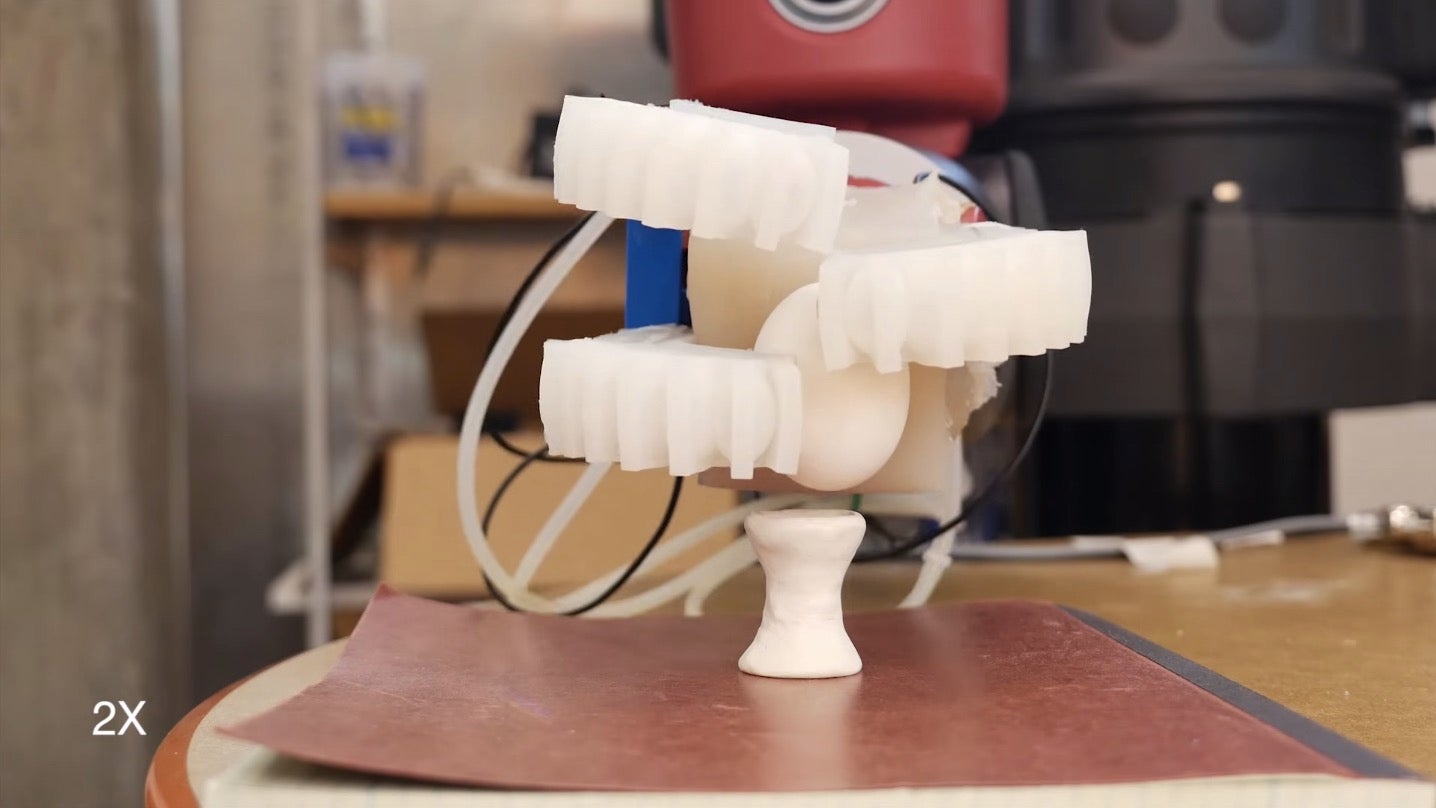Good news: Robots will no longer crush us like fragile eggshells when they hold us
Robots are generally not soft and cuddly. They’re usually made of metal for sturdiness, and, as a result, aren’t so great at interacting with us soft and easily breakable humans. We cover them in plastic, or fake fur, to make them a little more accessible. But a new field of robotics study—unsurprisingly called soft robotics—is figuring out how to make robot-human interaction truly safe.


Robots are generally not soft and cuddly. They’re usually made of metal for sturdiness, and, as a result, aren’t so great at interacting with us soft and easily breakable humans. We cover them in plastic, or fake fur, to make them a little more accessible. But a new field of robotics study—unsurprisingly called soft robotics—is figuring out how to make robot-human interaction truly safe.
At MIT’s Computer Science and Artificial Intelligence Lab, a team of engineers have built a robot hand that’s capable of grabbing and picking up delicate objects without damaging them. The hand, which has been attached to a Rethink Robotics’ Baxter robot, is a 3D-printed piece of silicone, embedded with sensors that help the hand identify what it’s grabbing. That allows the hand to pick up objects, like an egg, a paper cup, or a pair of glasses, without breaking them. The hand has pneumatic pistons that cause air pockets in the fingers to expand and contract, which allows the robot to control how soft or hard it grabs something—with no metal needed.
“Robots are often limited in what they can do because of how hard it is to interact with objects of different sizes and materials,” Daniela Rus, the director of MIT’s Distributed Robotics Lab, said in a release.
The soft-touch hand is also dextrous—it’s able to pick up a single sheet of paper and a pencil with relative ease—unlike many other robots, which struggle to grasp everyday objects. The team published their research today (Sept. 30) in the proceedings of the IEEE’s robotics conference in Hamburg. The goal of the research, MIT said, is to help future robots grab objects of all shapes, but also make robots more flexible. Metal robots are rigid, which tends to limit their maneuverability. Robots that incorporate more forgiving materials might be able to recover from falls or work themselves into places they might not have otherwise fit.
Soft robotics is still a relatively new field of study—it received its own peer-reviewed scientific journal in 2014—but it could well end up affecting how the robots we invite into our homes in the future are built. We’re slowly starting to see basic robots—vacuum cleaners, four-foot emotional friends, and Star Wars characters—enter the home, but they’re still hard and unwelcoming—unless you’re a cat, it seems.
Scientists at Carnegie Mellon University are working on a real-life version of Baymax, the inflatable medical robot in Disney’s “Big Hero 6,” which uses a similar idea to inflate itself and move around. Who knows: In the future, we may be able to hug robots, instead of run in fear from them.